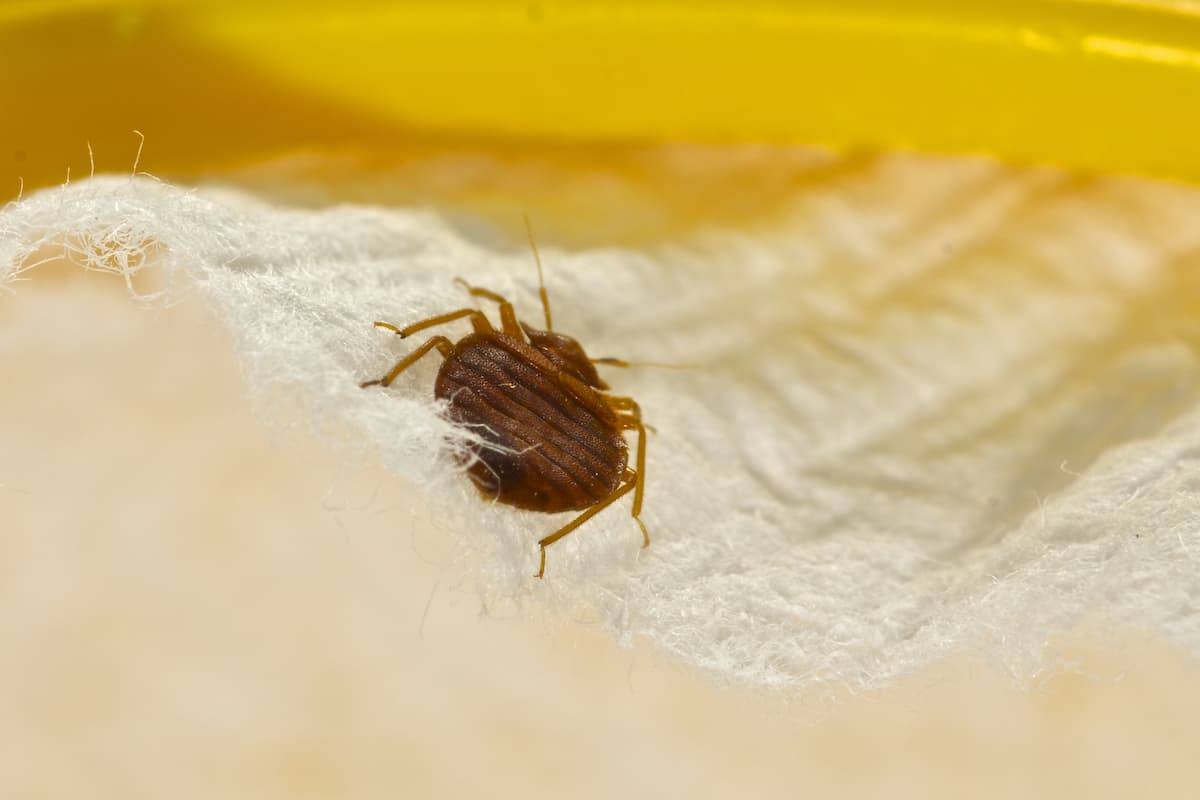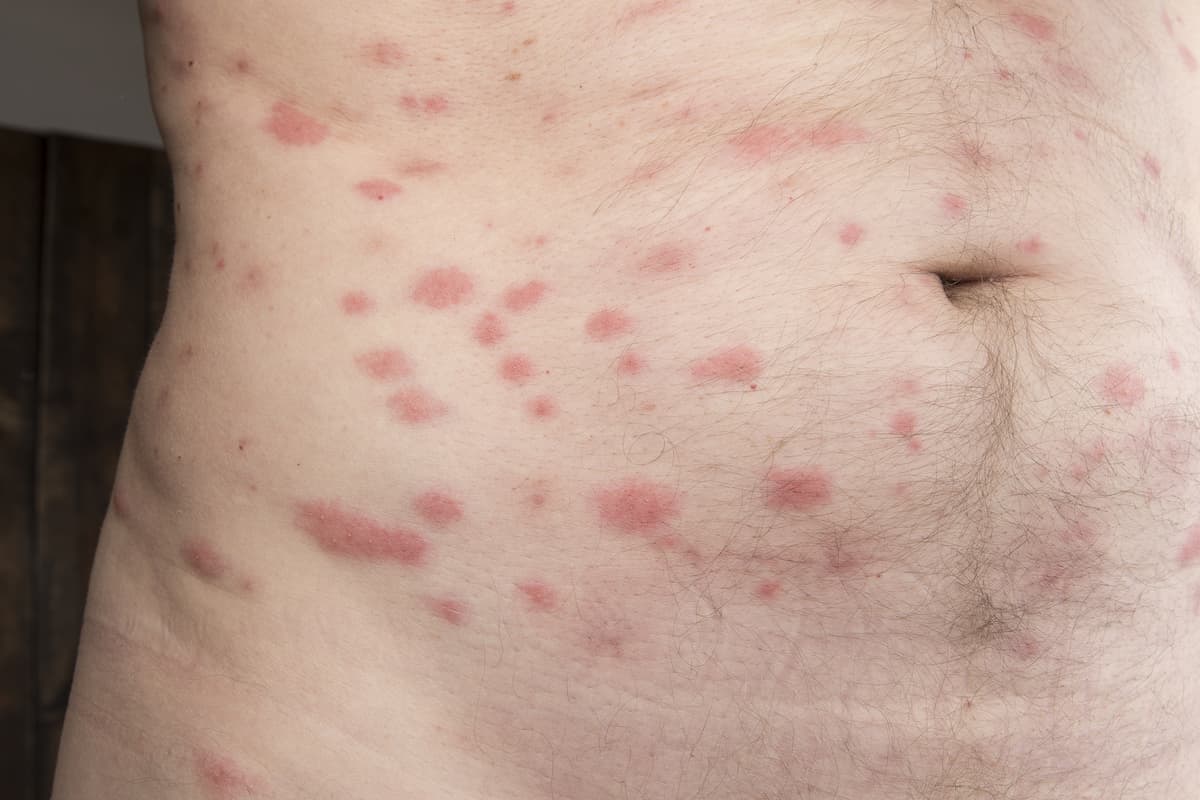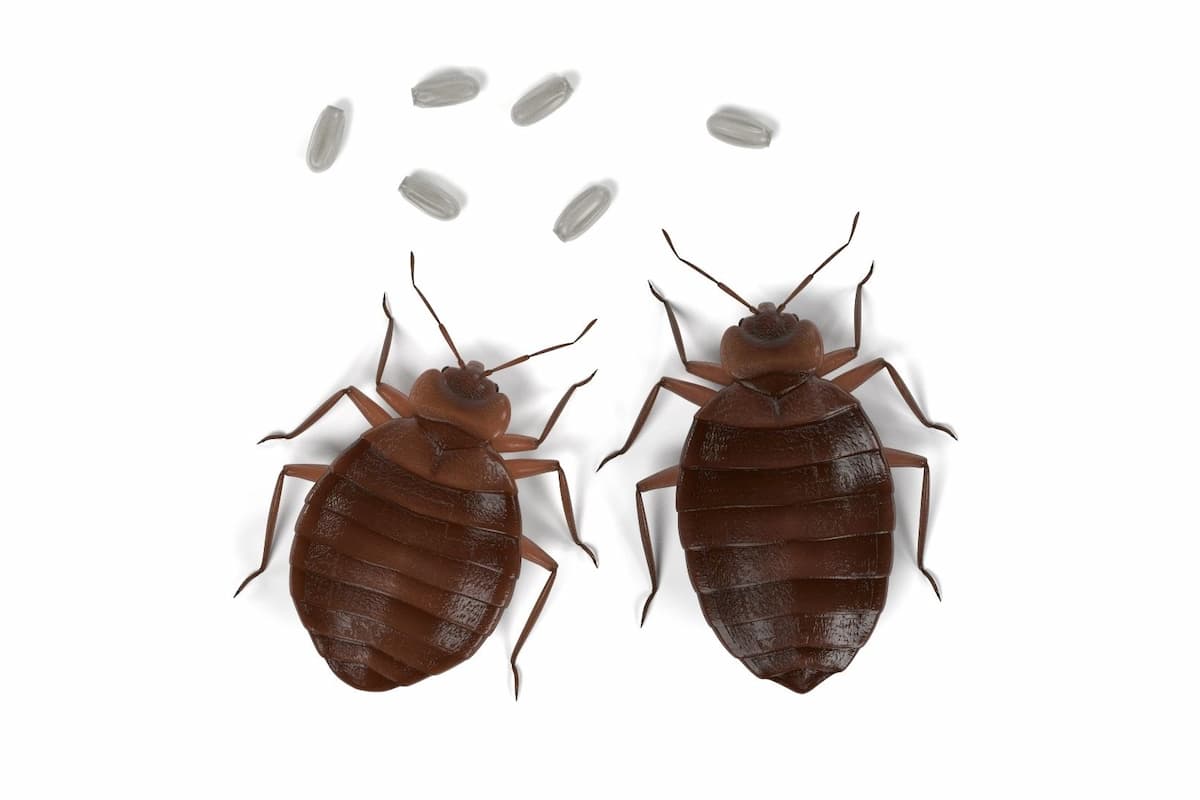Can You Get Bed Bugs From Hugging Someone?
Bed bugs are increasingly becoming a bigger problem in the world, leading to a lot of anxiety about catching the little critters.
And this fear has caused people to wonder if just hugging a person with bed bugs is enough to transmit them.
It is possible to get bed bugs from hugging someone who has them in their house. However, the chances of bringing bed bugs home with you via person-to-person contact are minimal. Instead, most people get bed bugs by carrying them home in a bag or on an infested item.
Can I Get Bed Bugs From a Hug?

Technically, you can get a bed bug on you from hugging another person.
Bed bugs can cling to a person’s clothes and then latch onto yours when you hug them.
But your chances of getting bed bugs via person-to-person contact are pretty low because these insects do not live on people like lice.
Bed bugs instead stay hidden, usually on or around furniture, until they feed.
Hiding keeps bed bugs safe, so their instincts tell them to do so.
Thus, they don’t like to stay on people for longer than they must.
Also, for the bed bug to transfer over to you during a hug, it would have to decide to crawl over at the exact moment you’re embracing that person.
Then, the insect would need to stay on you long enough for you to bring it to your house.
Therefore, you can see that getting bed bugs from a hug just isn’t likely to happen.
What Are the Most Likely Ways to Get Bed Bugs?
Since bed bugs don’t like to stay on humans, you are most likely to get them from bringing an infested item into your home.
One way this can happen is if you buy or receive something infested with bed bugs.
And on the whole, mattresses are bed bugs’ favorite spots to hide.
But you can also often find the insects in or on couches, stuffed animals, rugs, bedding, or clothes.
Thus, you should always be careful when bringing home any secondhand items by inspecting them for bed bugs before you take them into your house.
The second most common way bed bugs move from home to home via infested objects happens when a bed bug gets into your bag.
A bed bug can quickly crawl inside your bag without you noticing, where it will hitch a ride to your house.
What Should I Do if I Visit a Place With Bed Bugs?

If you believe you visited a place that has bed bugs, you should refrain from bringing any potentially infested objects into your home.
If you brought a bag with you, you should empty it before you enter your home and put all its contents into plastic bags.
From here, you can take all of your washing machine-safe items to your laundry room or the laundromat.
Keep them sealed in the plastic bag until you are ready to dump them in the washing machine.
Then, wash and dry the objects on the highest heat setting.
Meanwhile, you should use a flashlight and a magnifying glass to inspect items you can’t wash.
Once you’re sure there are no bed bugs, you can remove the objects and bring them inside.
Finally, inspect your bag in the same way, making sure to pay attention to all the crevices and pockets where bed bugs could hide.
How Can I Tell if I Have Bed Bugs?
If you are afraid you picked bed bugs up from someone or somewhere, you should watch for signs of an infestation.
Common signs of bed bugs in a home include:
- Bed bugs
- Bed bug eggs or egg casings
- Bed bug exoskeletons
- Dark spots on or near your mattress
- Blood spots on your sheets, blankets, or pillowcases
- Bed bug bites
Just remember, though, that it may be a while before you notice the bed bugs.
It takes about ten days for a bed bug to hatch and then another five or six weeks for them to develop into adults.
Thus, it could be more than a month before you witness any definitive proof of a bed bug infestation.
Can Bed Bugs Go From One Apartment to the Next?

Yes, bed bugs can travel from one apartment to another, and this scenario is much more likely than getting an infestation from a hug.
Bed bugs are small and are pretty flat if they haven’t eaten in a while.
Thus, they can get into just about any crack in the wall, ceiling, or floor.
From there, they can travel throughout the whole building.
Bed bugs can also crawl relatively fast, at about 4 feet (1.2 m) per minute.
So, if bed bugs have taken over one apartment, they can easily travel to others.
Can You Get Bed Bugs if You Help Someone Move?
If you’re helping a person who has bed bugs move their belongings, you could potentially bring the little insects back home with you.
So, if you need to help someone move and you know they have bed bugs, you should take some precautions to ensure you get rid of any bed bugs that may be on you.
First of all, if you bring a bag with you, leave it in your car instead of taking it in their home.
Doing so will be your best chance of not getting bed bugs.
Also, you should carry extra clothes with you, so you can change into them before you get back home.
Then, after switching clothes, put your old garments in a plastic bag and take them directly to your laundry room or the laundromat.
Wash and dry them on the highest setting because bed bugs can not live through excessive heat.
How Easily Can a Person Get Bed Bugs?

It isn’t that difficult to get bed bugs, but it also isn’t as easy as many believe it is.
For one, bed bugs do not jump or fly, meaning they can only crawl from place to place or person to person.
Additionally, bed bugs do not survive well in the wild, so it’s improbable that a bed bug will just walk into your home.
Instead, bed bugs are virtually always transferred by people moving them around.
And like I said above, they mainly invade houses when someone brings in an infested item.
With that said, though, bed bugs have become more and more of a problem in recent decades, partly because of the rise in world travel.
Since the world is more connected to each other than ever, it isn’t hard for bed bugs to infest an area that hasn’t had to deal with them in a long time.
Furthermore, bed bugs will do everything they can to find a dependable host if they have no reliable source of blood.
Thus, they will continue to travel in search of a meal until they find one, and they don’t like to leave after they’ve eaten.
In conclusion, bed bugs aren’t highly contagious, but they are determined to find a host.
Will Bed Bugs Remain on Me After I Take a Shower?
As I said, bed bugs do not live on people, so you probably won’t have one just crawling around on you unless you were in a heavily infested area.
Yet, if you want to be sure you don’t have any insects on you, a shower will do the trick.
Bed bugs can’t cling to people’s skin or hair in the same way that ticks and lice can, so when you shower, any bed bugs you have on you will get washed down the drain.
Could I Bring Bed Bug Eggs Home With Me?

It is possible to bring bed bug eggs home with you from an infested place.
The most likely way this will happen is if a bed bug lays its eggs in your bag.
Bed bugs almost always hide their eggs in a dark and warm place, meaning they may choose the inside of your bag.
On the other hand, when it comes to getting bed bug eggs on you from another person, such as when you hug them, the chances are low.
Yet, it’s not impossible.
If a person has bed bugs, the insects might have laid their eggs on their clothes, and then they could pass them onto you when you hug them.
This scenario isn’t too likely, though.
How to Identify Bed Bug Eggs
Bed bug eggs look like small pieces of rice and are either clear or tan.
You may even be able to see a dark spot inside them where the unborn bed bug is developing.
Conclusion
Overall, you can get bed bugs from hugging another person, but the chances of this happening aren’t great.
You are much more likely to get bed bugs from an encounter with an infested item rather than directly from a person who has bed bugs.
Table of Contents
- Can I Get Bed Bugs From a Hug?
- What Are the Most Likely Ways to Get Bed Bugs?
- What Should I Do if I Visit a Place With Bed Bugs?
- How Can I Tell if I Have Bed Bugs?
- Can Bed Bugs Go From One Apartment to the Next?
- Can You Get Bed Bugs if You Help Someone Move?
- How Easily Can a Person Get Bed Bugs?
- Will Bed Bugs Remain on Me After I Take a Shower?
- Could I Bring Bed Bug Eggs Home With Me?
- Conclusion
